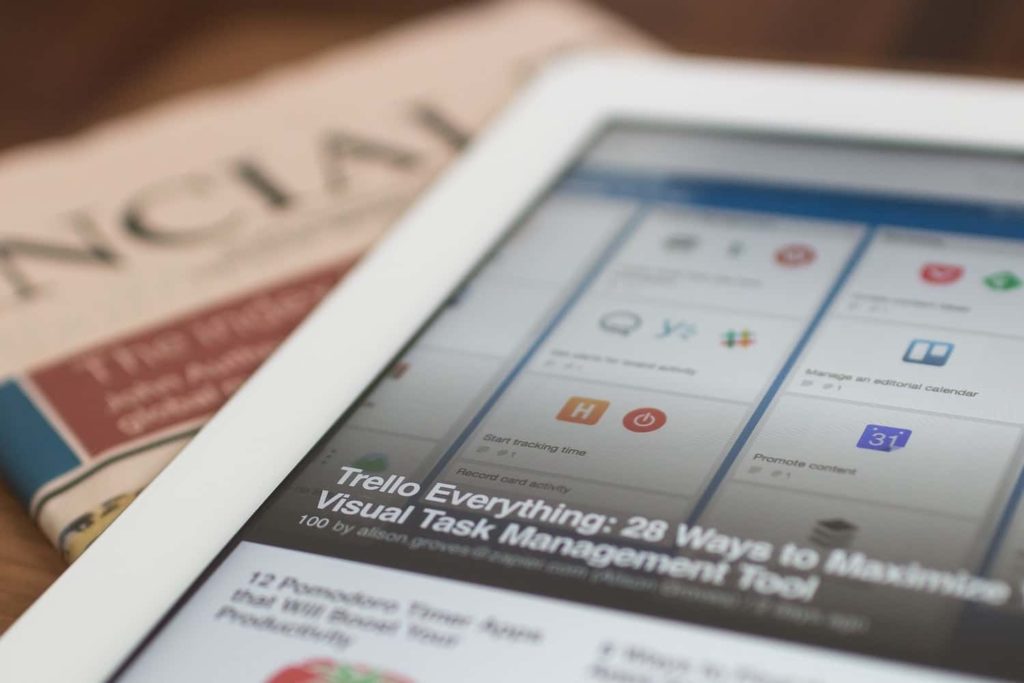In this article, I will summarise a number of general web publishing best practices that meet both modern Internet standards and international accessibility requirements.
Generally speaking, these guidelines are good for all types of web publishing, whether you’re writing an article or creating static page content. These tips will hold you in good stead with any web project you might be involved with now or in the future.
Let’s get started.
Aims of this guide
Using the advice in this guide, you will;
- find out how to write engaging, readable and shareable content
- know how to structure your content
- discover how and when you should use text formatting, images and tables
- learn how best to use links
- aid users with accessibility requirements to engage with your content
Before you start
Before you write a single word, it is important that you set yourself an intention. Why are you writing this piece of content? What is its purpose? What will the user get out of reading it?
Keep you intention(s) in mind throughout the writing process. This will keep you focused on your task and will stop you from meandering off topic.

Write a great headline
Your content starts with a headline. It’s normally the first thing that your users will see, so it’s really important you get it right.
Your headline should concisely describe the purpose of your content. Your users should not be left guessing what your content is about. Think about what might attract you into reading your content. Your headline is very much your ‘shop window’, so use it to sell your work.
Proven techniques for writing great headlines include;
- Targeting the headline. Tell your users what they’ll personally get out of reading your content.
- Using positive words. Word’s like ‘great’, ‘awesome’, ‘helpful’, ‘enhance’, ‘best’, & ‘brilliant’ are examples of the types of words you should be using.
- Use numbers. Users love listicals (articles that are lists of tips, advice or anything), so let them know you’ve written one by stating the number of items in your listical.
Using these tips, you can write attractive, purposeful headlines like; ’10 Great Ways to Improve Your Work/Life Balance,’ or ’15+ Tips From Experts on How to Write Fantastic Headlines.’
If you’re initially struggling to write your headline, don’t worry. It’s common to want to change your headline once you’ve finished working on your article or page. Write your headline before you start work on the body of your content, but be open to changing it once you’ve finished.
It’s worth noting that this particular advice may not apply if you’re working on static page content. For example, there’s no need to think too hard about the page title if you’re working on an About or Contact Us page.
Capitalisation of headlines
Apart from ‘minor’ words, all words in your headline should be capitalised. This formatting is often called ‘Title Case’, though the rules on which words to capitalise and those you shouldn’t varies from style guide to style guide. As a general guide, words like, ‘and’, ‘the’, ‘a’, ‘is’, ‘as’ & ‘if’ should be in lowercase (unless these words are the first or last words of your headline, in which case they should be capitalised).
AP’s style guide is generally a good standard to follow. You can format your headline automatically in accordance with AP’s style guide using TitleCase or various other online headline formatting tools.
Using headings
Headings are a great way to break up long chunks of text and help your readers to scan and navigate their way through your article. Articles that use lots of headings look instantly more appealing and accessible and helps users to find the exact information they require.
Using headings is also useful for optimising your articles for search engines (one element of a practice called ‘Search Engine Optimisation’, or ‘SEO’) and also creates navigational and contextual clues for assistive technology users.
Headings must be short, direct and should be easily understood without context.
Heading sizes
Headings are not just regular lines of text. They are designated attributes in the code of your web pages. In most, if not all CMS’s (content management systems), there will be pre-determined options to use Headings, from H1 to H6 (in descending size order). You should never use bold, italicised and/or resized text in place of actual headings.
- Heading 1 (H1) is allocated as your headline (see above). Only one instance of a H1 heading should appear on any one web page.
- Heading 2 (H2) is slightly smaller in size than H1 and is used to create broad sections in your content
- Heading 3 (H3) is smaller still and must be nested underneath H2’s. You can use H3’s to break up content within H2 sections.
- Headings 4 & 5 (H4 & H5) are also available, though are less commonly used. As you would expect, their sizes descend further and they must be nested (i.e. you must not use a H4 underneath a H2 unless your H4 is nested underneath a H3 first).
This very page is a useful demonstration on how to use headings effectively. The H1 on this page is ‘A Guide to Modern & Accessible Web Publishing Best Practice in 2020’, H2s are ‘Write a great headline’ & ‘Using headings’ and an example of an H3 is ‘Heading sizes’.
Capitalisation of headings
The first word of headings should be capitalised (except in very rare cases, such as eBay), but all other words (except nouns) not capitalised.

Writing your introduction
Your opening paragraph is critical. It may be the only paragraph that your users actually reads from start to finish. Keep it short and describe what your content is for and what your users will gain from reading it.
Give your content room to breathe
Large blocks of text are visually off-putting and readers tend to avoid them. Breaking your content into smaller paragraphs will help your readers to engage with your content. Generally speaking, keeping one ‘idea’ per paragraph is a good rule of thumb.
Be authentic
Writing for the web is different from writing a report or business plan. Readers expect an informal, helpful and personal tone. You can still maintain a professional tone to your content, but it’s also important that you write authentically. This way, your readers will find it easier to relate to your content and engage with it.
Add emphasis
Use bold and italic text formatting to highlight key words or phrases. Doing this sparingly can help to draw your reader’s eye to the words or phrases you want to emphasise.
Using underline text formatting can be confusing as web users associate underlined words with links. You should therefore not use underlining to emphasise text.
Alignment
Assuming you’re writing content in a language that reads left-to-right, it’s is generally best to keep text aligned to the left. Centred text works in some circumstances (for callouts, quotes and headings), but for plain text, keep it to the left.

Links (Hyperlinks)
Internal links are links to other pages of your website. External links are links to other websites. Inserting both types of link into your content is strongly encouraged for multiple reasons;
- It’s helpful to your readers who may want to find out more about certain topics
- it’s encourages readers to explore more pages of your website
- It’s builds relationships with other content creators
- It helps search engines to understand how different types of content relate to one another
When it comes to using links, being contextual is crucial. When you create a link, use meaningful text that describes the target of the link. You should avoid using ‘click here’ or including URLs in your content, unless there is no other alternative.
Examples of good links
- You can find more information on this topic in the Advice section.
- If you have any other ideas that you think might help, please get in touch.
- Think you could make a difference? Apply now to our Partnership Programme.
Examples of bad links
- To get in touch with a member of the team, click here.
- Read our annual report: https://fakewebsite.nets/reports/annual-report.pdf
Lists
Consider using ordered (numbered) or unordered (bulleted) lists if you think it’s appropriate to do so. Lists are an attractive, easily understood and accessible way to display listed content.
Tables
Tables are useful for displaying data that would otherwise not be easily understood. Their use is generally encouraged, though be mindful that tables may not look so good on mobile devices.
Tables should not be used to create page layouts and columns.
‘Interactive’ elements
Carefully consider whether interactive elements are necessary in your content. Generally speaking, accordions and mouse-over effects have a negative effect on usability and accessibility (particularly on mobile devices). It it normally best to keep things simple and to use hierarchical headings to structure your content.
If you’re concerned that your content is excessively long, resist the urge to use ‘interactive’ elements and instead;
- Break your content into small chunks and display it on multiple pages
- Use Anchor links to create a Table of Contents at the top of your content to help users jump to the sections that interest them most.

Images
Images help to bring content to life and you should use them within your content. If your content sections are fairly small, consider inserting images between your sections. If you have long sections, it’s sometimes nice to insert images within those sections to help break things up.
Images should never be just thrown in without context. They should be used to enhance your written content, not detract from it.
Images instead of text
Images should never be used to replace text (for example, as a heading) as they cannot be read by screen readers and other visual aids. Search engines will also struggle to understand or index your content, which will negatively affect your search engine ranking.
Alt text
Alt text is vital to those using assistive technology, particularly those with sight impairments. It helps them to understand everything that’s on the page. It’s also vital for SEO as search engine will struggle to index images without alt text.
Whenever you insert images into your content, you should also ensure you provide Alternative Text (aka “alt” tags). You alt text should briefly describe the image.
Different content management systems (CMS’s) manage this is different ways, so have a dig around to ensure you are always including alt text with your images.
If you do not have your own images to use, Unsplash and Pexels are great repositories for royalty-free images that you can download and use for free in any content.
Conclusion and call to action (CTA)
At the beginning or this post, I mentioned that you should keep an intention in mind whilst you compose your content. The end your article is a great place to wrap things up and encourage your readers to carry out an action that relates to your intention.
For example, if your intention is to encourage your readers to sign-up to a newsletter or to apply to a scheme, be up front, tell them and provide all the necessary links to enable them to carry out that action.
Examples of calls to action
- Subscribe now to our newsletter
- Apply now to our starter scheme
- Discover more about our training course

Leave a Reply